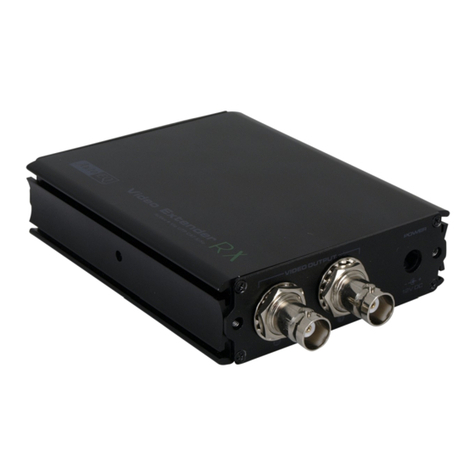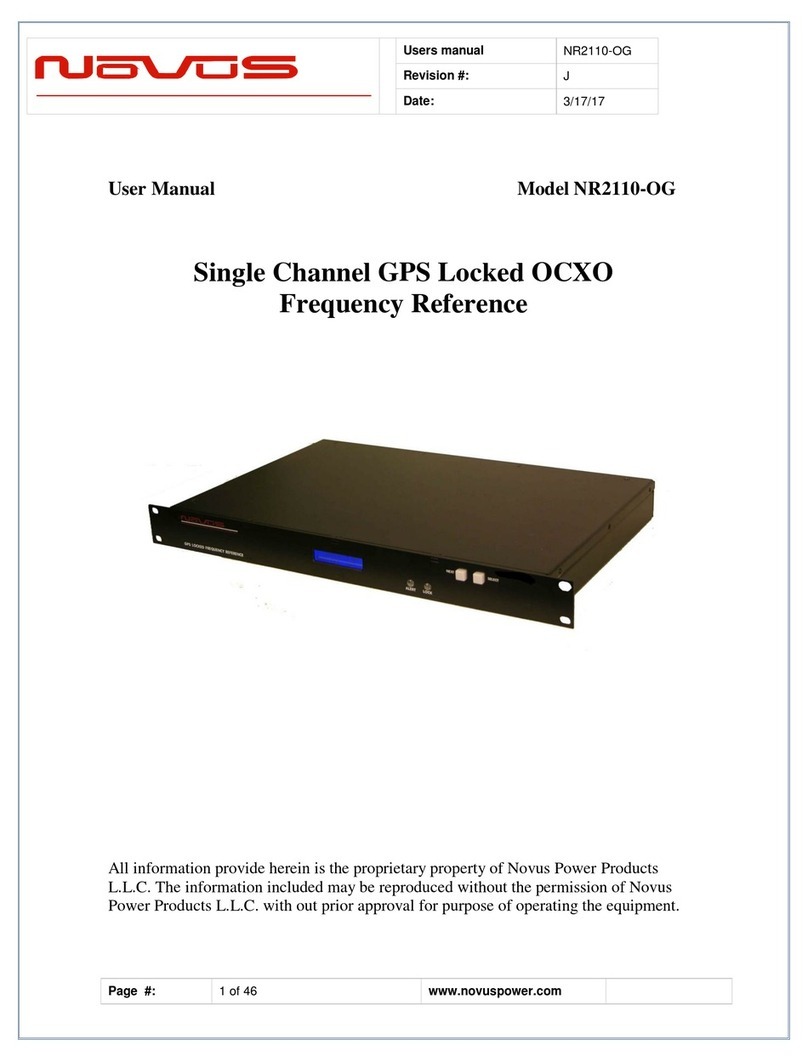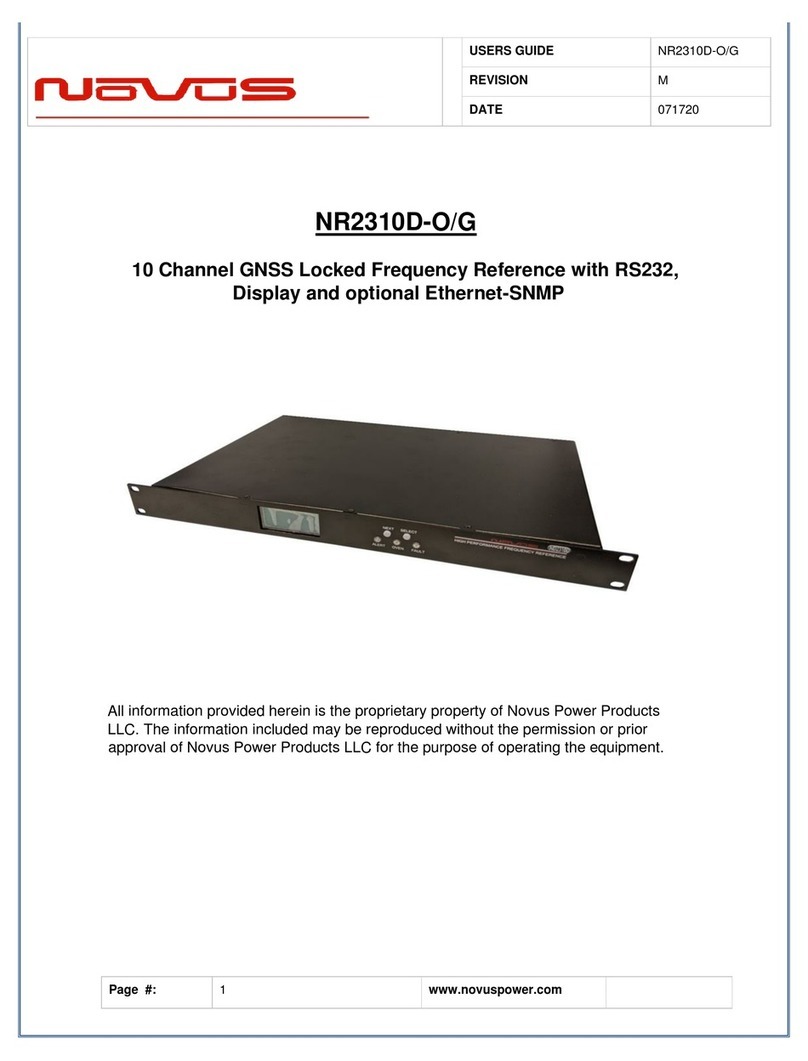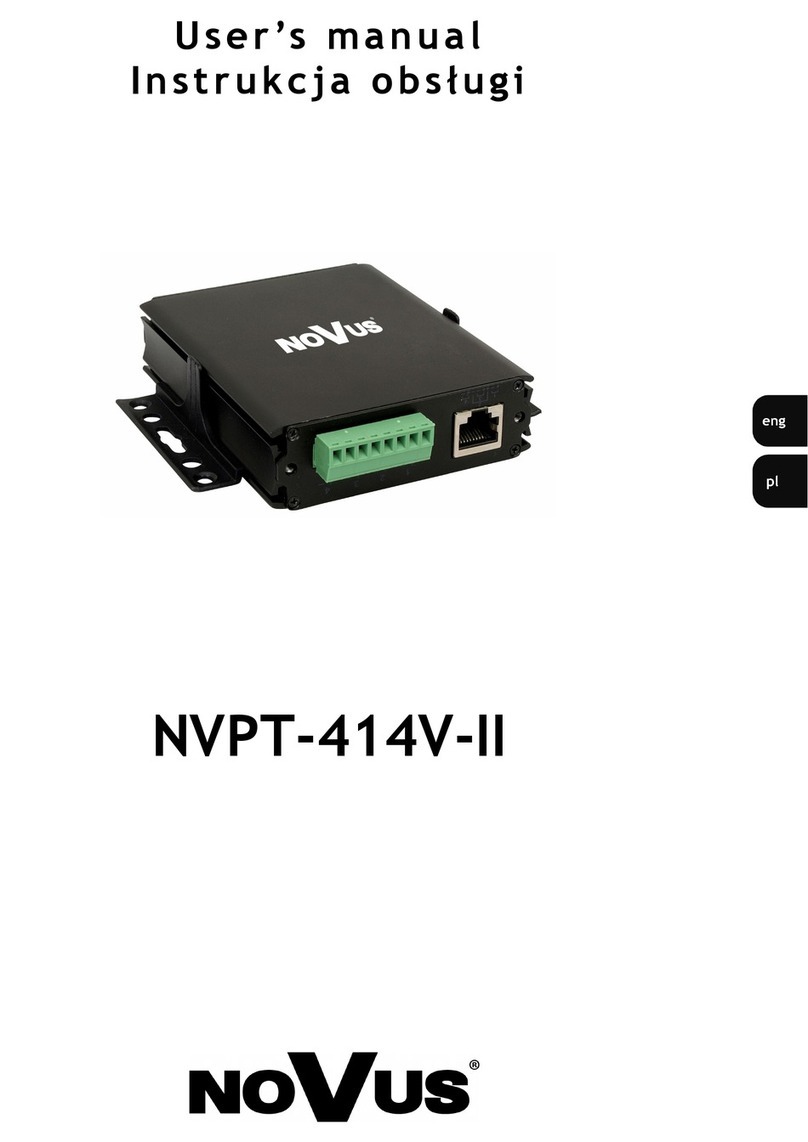Contents
1.0 Summary ..........................................................................................3
2.0 Inputs / Outputs ..............................................................................7
2.1 GNSS Antenna ............................................................................................... 7
2.2 SAMTEC Connector (10-pin MiniMate)............................................................. 8
2.3 PPS (Pin)....................................................................................................... 8
2.4 10 MHz sine (SMA)......................................................................................... 9
3.0 Typical Phase Noise .......................................................................10
4.0 Built-in Test....................................................................................11
5.0 Power .............................................................................................12
6.0 GNSS Function ...............................................................................13
7.0 Programming Guide (STATUS Port) ..............................................15
7.1 Status Commands.........................................................................................16
7.2 Status Strings ($GPNVS)................................................................................17
8.0 Mechanical .....................................................................................18
9.0 Performance...................................................................................19
Technical Specifications ......................................................................................19
Environmental and Mechanical ............................................................................21
10.0 LIMITED HARDWARE WARRANTY ..............................................22
11.0 Appendix: GPS/GNSS Command Reference ..............................24





































